
Cali: The Salsa Capital of the World
Discover Cali, Colombia: A vibrant city where the rhythm of salsa, rich history, and stunning natural beauty create an unforgettable travel experience.
Cali, known as Santiago de Cali, is the vibrant heart of Colombia's Valle del Cauca. This city pulses with the rhythm of salsa music, earning its title as the Salsa Capital of the World. Its streets come alive with dance, especially in the lively neighborhood of Juanchito, where you'll find bustling salsa clubs and dance schools. Visitors can immerse themselves in the local culture by taking a salsa class and joining the locals on the dance floor. Beyond its musical allure, Cali offers a rich tapestry of history and natural beauty. The city's historic center, with its colonial churches and museums, provides a glimpse into Cali's past. Don't miss the iconic Cristo Rey statue, which offers panoramic views of the city from its hilltop perch. For nature lovers, the nearby Farallones de Cali National Park is a paradise of lush forests and cascading waterfalls, perfect for hiking and bird-watching. Cali's culinary scene is another highlight, with a mix of traditional Colombian dishes and innovative fusion cuisine. Be sure to try local specialties like empanadas, sancocho, and the refreshing lulada drink. The city's markets, such as the Alameda Market, are great places to sample fresh produce and local delicacies. Whether you're a dance enthusiast, a history buff, or a nature lover, Cali has something to offer every traveler.
Local tips in Cali
- Take a salsa class: It's a must-do to truly experience Cali's vibrant culture.
- Visit the Cristo Rey statue early in the morning to avoid crowds and get the best views.
- Try local street food: Empanadas and lulada are must-tries.
- Wear comfortable shoes: The historic center and markets are best explored on foot.
- Consider visiting the Farallones de Cali National Park for a day trip to enjoy nature.
Neighbourhoods in Cali
Cali: The Salsa Capital of the World
Cali, known as Santiago de Cali, is the vibrant heart of Colombia's Valle del Cauca. This city pulses with the rhythm of salsa music, earning its title as the Salsa Capital of the World. Its streets come alive with dance, especially in the lively neighborhood of Juanchito, where you'll find bustling salsa clubs and dance schools. Visitors can immerse themselves in the local culture by taking a salsa class and joining the locals on the dance floor. Beyond its musical allure, Cali offers a rich tapestry of history and natural beauty. The city's historic center, with its colonial churches and museums, provides a glimpse into Cali's past. Don't miss the iconic Cristo Rey statue, which offers panoramic views of the city from its hilltop perch. For nature lovers, the nearby Farallones de Cali National Park is a paradise of lush forests and cascading waterfalls, perfect for hiking and bird-watching. Cali's culinary scene is another highlight, with a mix of traditional Colombian dishes and innovative fusion cuisine. Be sure to try local specialties like empanadas, sancocho, and the refreshing lulada drink. The city's markets, such as the Alameda Market, are great places to sample fresh produce and local delicacies. Whether you're a dance enthusiast, a history buff, or a nature lover, Cali has something to offer every traveler.
When is the best time to go to Cali?
Iconic landmarks you can’t miss
Zoológico de Cali
Discover the remarkable biodiversity at Zoológico de Cali, a premier zoo and zoological museum in Valle del Cauca, Colombia.

San Antonio Chapel
Explore the tranquil gardens and rich heritage of San Antonio Chapel, a charming city park in the heart of Cali, Colombia.
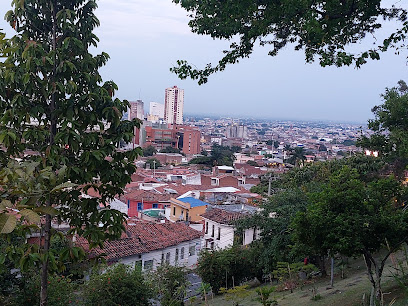
Plaza de Caicedo
Explore Plaza de Caicedo, a vibrant city park in Cali, Colombia, where history meets culture amidst stunning architecture and lively ambiance.
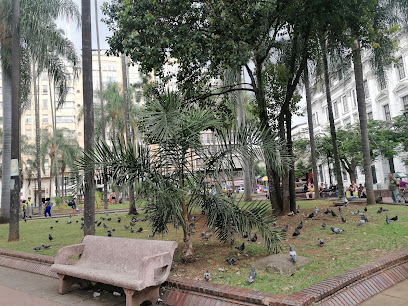
Plazoleta Jairo Varela o de La Caleñidad
Explore the vibrant Plazoleta Jairo Varela in Cali—where culture, music, and local life converge in a beautiful park setting.

Parque Artesanal Loma de La Cruz
Explore Parque Artesanal Loma de La Cruz in Cali for a vibrant mix of local crafts, delicious food, and a taste of Colombian culture.

El Gato del Río
Discover El Gato del Río, a colorful artistic landmark in Cali, Colombia, where culture, nature, and creativity blend beautifully along the riverside.

Estatua Sebastián de Belalcázar
Explore the iconic Sebastián de Belalcázar statue in Cali, Colombia - a symbol of history and culture with breathtaking views.

Iglesia Ermita
Discover the stunning architecture and rich history of Iglesia Ermita, a must-visit Catholic church and cultural landmark in Cali, Valle del Cauca.

Eco Park Lake Las Garzas
Experience the serene beauty of Eco Park Lake Las Garzas, a stunning nature preserve in Cali, Colombia, perfect for relaxation and wildlife exploration.

Calima Gold Museum of the Bank of the Republic
Explore the Calima Gold Museum, a premier archaeological gem in Cali, showcasing exquisite gold artifacts and rich indigenous history.

Monumento a la Solidaridad
Explore the Monument to Solidarity in Cali, a stunning tribute to unity and resilience, surrounded by lush gardens and rich local culture.
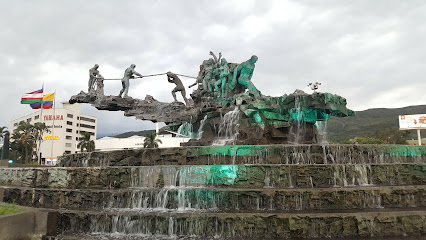
Mariposario Andoke
Experience the beauty of nature at Mariposario Andoke, the stunning butterfly sanctuary in Valle del Cauca, Colombia, where education meets enchantment.

La Merced Church
Explore the captivating La Merced Church, a historical and architectural marvel in the heart of Cali, Colombia, offering serenity and cultural richness.

Free Walking Tour Cali Beyond Colombia
Discover the vibrant culture and rich history of Cali on a Free Walking Tour with Beyond Colombia, perfect for budget-friendly travelers.
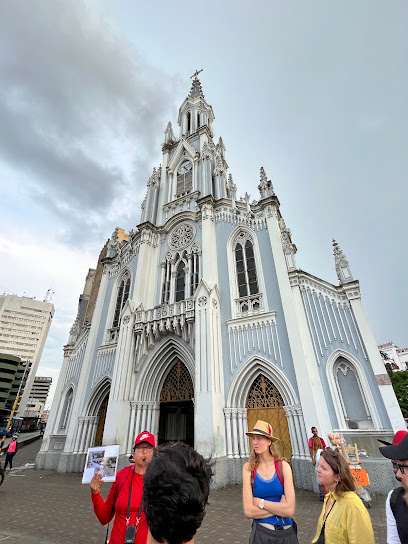
Museo Caliwood
Explore Museo Caliwood in Cali, a captivating museum dedicated to the history and evolution of Colombian cinema, showcasing artifacts and interactive exhibits.

Unmissable attractions to see
Zoológico de Cali
Discover the diverse wildlife and conservation efforts at Zoológico de Cali, a premier attraction in Colombia's vibrant Valle del Cauca region.

Plaza de Caicedo
Experience the vibrant essence of Cali at Plaza de Caicedo, a cultural hub of lush greenery and lively social gatherings.

Plazoleta Jairo Varela o de La Caleñidad
Explore the heart of Cali at Plazoleta Jairo Varela, a vibrant park filled with art, culture, and local flavor in Valle del Cauca.

Parque Artesanal Loma de La Cruz
Explore the artistic heart of Cali at Parque Artesanal Loma de La Cruz, where local crafts, music, and flavors come together in a vibrant cultural experience.

Iglesia de San Antonio
Discover the architectural beauty and cultural richness of Iglesia de San Antonio, a must-visit landmark in Cali, Valle del Cauca.

Acuaparque de la Caña
Discover endless family fun at Acuaparque de la Caña, Cali's most exciting water park with thrilling slides and relaxing pools.
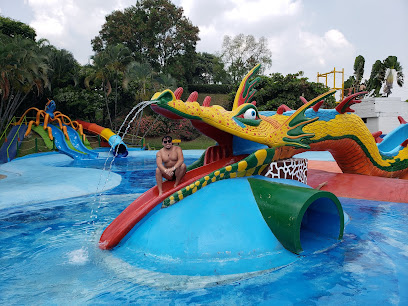
El Gato del Río
Discover the enchanting El Gato del Río in Cali, a monumental sculpture that blends art and nature, embodying the vibrant spirit of Colombia's cultural capital.

Casa Museo Hacienda El Paraíso
Explore the historical beauty of Casa Museo Hacienda El Paraíso in El Cerrito, Valle del Cauca, where literature, culture, and nature converge.

La Topa Tolondra Nightclub
Discover the heart of Cali's nightlife at La Topa Tolondra Nightclub, the ultimate disco experience filled with salsa rhythms and vibrant energy.

Museo La Tertulia
Explore the vibrant Museo La Tertulia in Cali, Colombia, a cultural treasure that celebrates contemporary and modern art amidst stunning architecture.
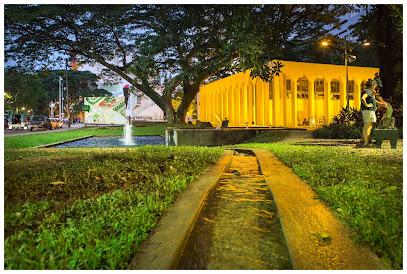
River View Park
Discover River View Park in Cali, where nature meets adventure in a serene riverside setting, perfect for family fun and cultural experiences.

Iglesia Ermita
Explore the stunning architecture and rich history of Iglesia Ermita, a captivating Catholic cathedral in the heart of Cali, Valle del Cauca.

Teatro Jorge Isaacs
Discover the cultural heart of Cali at Teatro Jorge Isaacs, an architectural masterpiece and vibrant performing arts venue showcasing extraordinary talent.

Municipal Theatre Enrique Buenaventura
Discover the rich cultural heritage of Cali at the Municipal Theatre Enrique Buenaventura, a hub for performing arts and vibrant entertainment.

Parque Panamericano
Explore the lush landscapes and cultural vibrancy of Parque Panamericano in Cali, a serene escape perfect for relaxation and leisure activities.

Essential places to dine
Los Santos Food Trucks
Discover culinary delights at Los Santos Food Trucks in Cali – a vibrant hub for street food lovers featuring diverse flavors and lively ambiance.

Storia D'Amore Granada
Experience exquisite Italian dining at Storia D'Amore in Granada, Cali – where every meal is a celebration of flavors and hospitality.

Cantina La 15 Granada Cali Norte
Experience the vibrant flavors of Mexico at Cantina La 15 in Granada, Cali – where every meal is a celebration!

La Barra Restaurante
Discover authentic Colombian flavors at La Barra Restaurante in Cali - where tradition meets taste in every bite.

Platillos Voladores
Indulge in an unforgettable culinary journey at Platillos Voladores in Cali, where exquisite flavors meet elegant dining.

El Rancho de Jonás
Discover authentic Colombian cuisine at El Rancho de Jonás in Cali - a vibrant restaurant offering traditional dishes and a welcoming atmosphere.

D'Toluca Restaurante Bar
Discover the authentic taste of Mexico at D'Toluca Restaurante Bar in Cali – where vibrant flavors meet an unforgettable nightlife experience.

Restaurante Mistiko
Experience the best of Colombian cuisine at Restaurante Mistiko in Cali's vibrant 20 de Julio neighborhood.

Patio Santo
Experience exquisite Mediterranean cuisine at Patio Santo, where every dish tells a story in an inviting atmosphere.

El Zaguán de San Antonio
Experience authentic Colombian cuisine at El Zaguán de San Antonio in Cali's charming San Antonio neighborhood.

La Comitiva
Discover La Comitiva: A top-notch restaurant in Cali offering exquisite Colombian cuisine and innovative cocktails in a vibrant setting.

Simón Parrilla Norte - Restaurantes en Cali
Experience authentic Colombian cuisine at Simón Parrilla Norte in Cali - where tradition meets flavor in every bite.

Antigua Contemporanea
Discover culinary excellence at Antigua Contemporanea in Cali – where tradition meets innovation in every bite.

Restaurante Ringlete
Discover the rich flavors of Colombia at Restaurante Ringlete in Cali's vibrant Barrio Granada - where culinary artistry meets warm hospitality.

La Bohème Restaurante-Bar
Savor exquisite tapas and handcrafted cocktails at La Bohème Restaurante-Bar in Cali, where culinary excellence meets vibrant nightlife.

Markets, malls and hidden boutiques
Jardín Plaza Shopping Mall
Explore Jardín Plaza Shopping Mall in Cali, Colombia - a vibrant shopping and dining hub with entertainment for everyone!

Centro Comercal Unico Outlet
Experience unbeatable shopping and dining at Centro Comercial Unico Outlet, Cali's ultimate retail destination with discounted brands and vibrant atmosphere.

Pacific Mall
Explore Pacific Mall in Cali, Colombia - a vibrant shopping haven offering diverse brands, delicious dining, and lively entertainment.

San Andresito - South Shopping Mall
Discover the vibrant shopping experience at San Andresito in Cali, Colombia, where local crafts meet international brands in a lively atmosphere.

Shopping Center
Explore the ultimate shopping destination in Cali with diverse stores, delicious dining, and a vibrant atmosphere perfect for tourists.
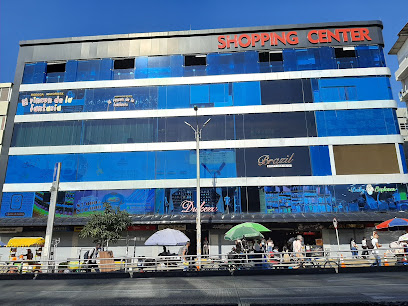
SHOP MODA
Explore SHOP MODA in Cali for a vibrant selection of women's fashion, local designs, and a delightful shopping experience in Colombia.
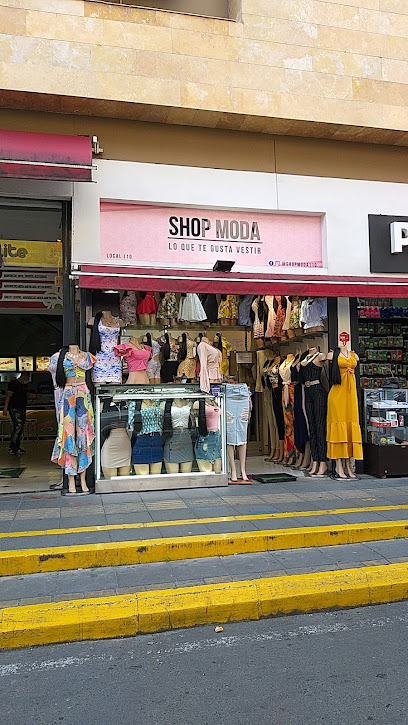
Official Store of America de Cali
Explore the Official Store of America de Cali for authentic merchandise and immerse yourself in the vibrant spirit of Colombian football culture.

Azur Store tienda anime, kawaii VIRTUAL
Explore Azur Store, the ultimate kawaii destination in Cali for collectibles, fashion accessories, and Asian household goods.

Laboutiquecali
Explore the chicest women's clothing store in Cali, Laboutiquecali, for a unique shopping experience filled with fashionable finds.
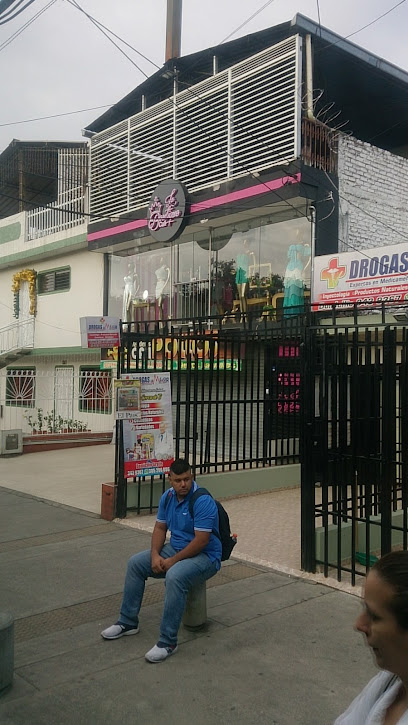
El pulguero de Artkyo - Boutique Femenina
Explore El Pulguero de Artkyo, a vibrant women's boutique in Cali, Colombia, offering trendy clothing and personalized fashion consulting.
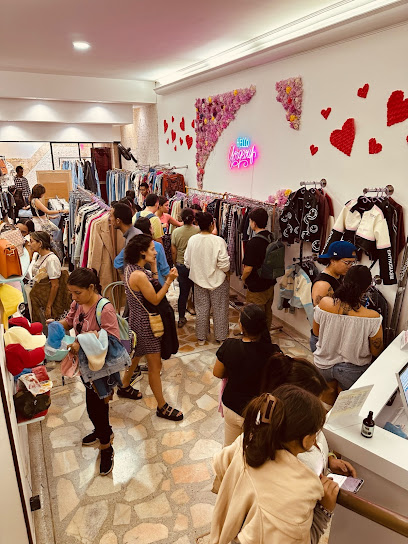
Mundo Play Anime & Toys
Discover a vibrant world of collectibles, anime, and gaming at Mundo Play Anime & Toys in Cali, where every fan finds their treasure.

Lloret de Mar Boutique
Explore Lloret de Mar Boutique, your one-stop shop for trendy beachwear, unique gifts, and fashionable finds in a coastal paradise.

Here We Go
Discover the heart of Cali at 'Here We Go', where unique souvenirs tell the story of Colombia's vibrant culture and artistry.

New Tienda Cali
Explore the colorful essence of Cali at New Tienda Cali, a general store filled with local treasures and authentic Colombian products.
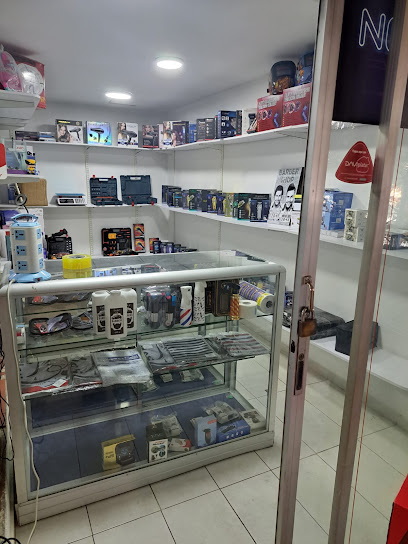
Objetivo Tienda de Diseño
Explore Objetivo Tienda de Diseño in Granada, Cali, for unique artisanal gifts, handmade crafts, and a true taste of Colombian creativity.

Essential bars & hidden hideouts
Bourbon St. Pub
Experience the vibrant nightlife of Cali at Bourbon St. Pub, where exquisite drinks and delightful cuisine meet a lively atmosphere.

La Pérgola Clandestina
Experience the vibrant nightlife of Cali at La Pérgola Clandestina, where cocktails and rhythms blend for an unforgettable evening.

Caf Bar El Viejo Barril
Discover the lively nightlife at Caf Bar El Viejo Barril, where delicious drinks and vibrant music create an unforgettable experience in Cali, Colombia.

Zaperoco Bar
Discover the vibrant salsa scene at Zaperoco Bar in Cali, where lively music, delicious drinks, and unforgettable nights await you.

ANTRO URBANO
Discover Antro Urbano, a lively grill and cocktail bar in Cali, Valle del Cauca, where culinary delights meet vibrant nightlife.

Bar la 20
Experience the vibrant nightlife of Cali at Bar la 20, where refreshing drinks and lively atmosphere await every night.

Rock City Bar
Experience the vibrant atmosphere and delicious grill specialties at Rock City Bar, a culinary gem in the heart of Cali, Valle del Cauca.
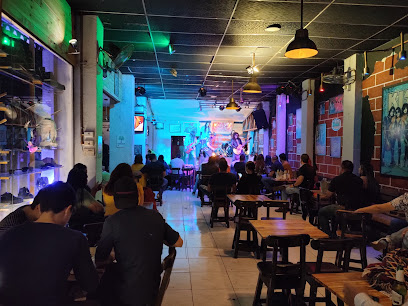
La Caldera del Diablo
Discover La Caldera del Diablo, a vibrant bar in Cali, Valle del Cauca, known for its lively atmosphere, innovative cocktails, and local music events.

ICARO BAR
Experience the vibrant nightlife of Cali at ICARO BAR, where delicious grilled dishes and creative cocktails come together in a lively atmosphere.
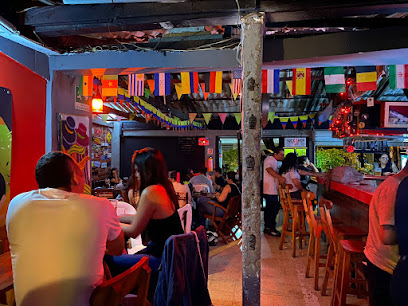
Bar Malibu Food and Cocktails
Experience the vibrant atmosphere of Bar Malibu in Cali, where exquisite cocktails and lively vibes come together in a tropical paradise.
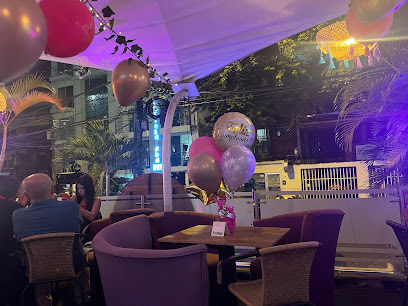
Punto Baré
Experience the vibrant nightlife of Cali at Punto Baré, where great cocktails and local brews create the perfect atmosphere for socializing.

Regia Bar
Discover the vibrant nightlife of Cali at Regia Bar, where music, cocktails, and a lively atmosphere come together for an unforgettable experience.

891 BAR
Discover the vibrant nightlife at 891 BAR in Cali, a stylish bar offering a diverse drink menu and a lively atmosphere perfect for socializing.

Cocktails & Dreams
Discover the vibrant nightlife of Cali at Cocktails & Dreams, where affordable cocktails meet an inviting atmosphere in Comuneros II.

THE PUB LEGEND
Discover the lively spirit of Cali at The Pub Legend, a must-visit bar offering great drinks and a vibrant atmosphere.

Local Phrases
-
- HelloHola
[oh-la] - GoodbyeAdiós
[ah-dee-ohs] - YesSí
[see] - NoNo
[noh] - Please/You're welcomePor favor/De nada
[por fah-vor/deh nah-dah] - Thank youGracias
[grah-see-as] - Excuse me/SorryPerdón/Lo siento
[pair-dohn/loh see-en-toh] - How are you?¿Cómo estás?
[koh-moh ehs-tahs] - Fine. And you?Bien. ¿Y tú?
[byehn. ee too] - Do you speak English?¿Hablas inglés?
[ah-blahs een-glehs] - I don't understandNo entiendo
[noh ehn-tee-ehn-doh]
- HelloHola
-
- I'd like to see the menu, pleaseMe gustaría ver el menú, por favor
[meh goos-tah-ree-ah ver el meh-noo, por fah-vor] - I don't eat meatNo como carne
[noh koh-moh kahr-neh] - Cheers!¡Salud!
[sah-lood] - I would like to pay, pleaseMe gustaría pagar, por favor
[meh goos-tah-ree-ah pah-gar, por fah-vor]
- I'd like to see the menu, pleaseMe gustaría ver el menú, por favor
-
- Help!¡Ayuda!
[ah-yoo-dah] - Go away!¡Vete!
[veh-teh] - Call the Police!¡Llama a la policía!
[yah-mah ah lah poh-lee-see-ah] - Call a doctor!¡Llama a un médico!
[yah-mah ah oon meh-dee-koh] - I'm lostEstoy perdido/a
[ehs-toy pair-dee-doh/dah] - I'm illEstoy enfermo/a
[ehs-toy ehn-fehr-moh/dah]
- Help!¡Ayuda!
-
- I'd like to buy...Me gustaría comprar...
[meh goos-tah-ree-ah kohm-prar] - I'm just lookingSolo estoy mirando
[soh-loh ehs-toy mee-rahn-doh] - How much is it?¿Cuánto cuesta?
[kwan-toh kwehs-tah] - That's too expensiveEsto es muy caro
[ehs-toh ehs moo-ee kah-roh] - Can you lower the price?¿Puedes bajar el precio?
[pweh-dehs bah-har el pree-see-oh]
- I'd like to buy...Me gustaría comprar...
-
- What time is it?¿Qué hora es?
[keh oh-rah ehs] - It's one o'clockEs la una
[ehs lah oo-nah] - Half past (10)Y media (10)
[ee meh-dee-ah (deez)] - MorningMañana
[mah-nyah-nah] - AfternoonTarde
[tahr-deh] - EveningNoche
[noh-cheh] - YesterdayAyer
[ah-yehr] - TodayHoy
[oy] - TomorrowMañana
[mah-nyah-nah] - 1Uno
[oo-noh] - 2Dos
[dohs] - 3Tres
[trehs] - 4Cuatro
[kwah-troh] - 5Cinco
[seen-koh] - 6Seis
[says] - 7Siete
[syeh-teh] - 8Ocho
[oh-choh] - 9Nueve
[nweh-veh] - 10Diez
[dyehs]
- What time is it?¿Qué hora es?
-
- Where's a/the...?¿Dónde está...?
[dohn-deh ehs-tah] - What's the address?¿Cuál es la dirección?
[kwal ehs lah dee-rehk-see-on] - Can you show me (on the map)?¿Me puedes mostrar (en el mapa)?
[meh pweh-dehs moh-strahr (ehn el mah-pah)] - When's the next (bus)?¿Cuándo es el próximo (autobús)?
[kwan-doh ehs ehl prohk-see-moh (ow-toh-boos)] - A ticket (to ....)Un boleto (para ...)
[oon boh-leh-toh (pah-rah)]
- Where's a/the...?¿Dónde está...?
History of Cali
-
Santiago de Cali, commonly known as Cali, was founded on July 25, 1536, by Spanish conquistador Sebastián de Belalcázar. It was established during the early period of Spanish colonization of the Americas, serving as a base for further expeditions into Colombia's interior.
-
During the colonial period, Cali became an important administrative and commercial hub. The indigenous population, primarily the Cauca Valley tribes, were significantly affected by Spanish colonization. The legacy of these indigenous groups is still evident in the region's cultural practices and place names.
-
In the 19th century, Cali and the Cauca Valley experienced a boom in sugarcane production. The fertile land and favorable climate made the region ideal for sugarcane plantations, leading to economic growth and the establishment of numerous haciendas.
-
In the late 20th century, Cali became infamous as the headquarters of the Cali Cartel, a powerful drug trafficking organization. The cartel played a significant role in the global cocaine trade during the 1980s and 1990s, shaping both the local and international perception of the city.
-
Despite its troubled past, Cali has undergone a cultural renaissance. The city is renowned for its vibrant salsa music and dance scene, hosting events like the World Salsa Festival. Cali's cultural institutions, including theaters, museums, and art galleries, contribute to its rich and diverse cultural landscape.
-
In recent decades, Cali has emerged as a major economic and industrial center in Colombia. Investments in infrastructure, education, and technology have spurred growth. The city's strategic location near the Pacific Ocean has also enhanced its role as a key trade hub.
-
The Cali Fair, or Feria de Cali, is one of the most significant cultural events in the city, held annually from December 25 to 30. The fair features parades, concerts, and the famous Salsódromo, a salsa parade that attracts dancers and visitors from around the world.
-
San Antonio is one of Cali's oldest and most picturesque neighborhoods. Known for its colonial-style houses, cobblestone streets, and vibrant arts scene, San Antonio offers a glimpse into the city's historical and cultural heritage.
Cali Essentials
-
Cali, located in southwestern Colombia, is accessible via Alfonso Bonilla Aragón International Airport (CLO), which serves both domestic and international flights. The airport is approximately 15 kilometers from the city center. You can reach the city via taxi, airport shuttle services, or rental cars. Direct flights from major cities like Bogotá, Medellín, Miami, and Madrid make it convenient for international travelers.
-
Cali has a variety of transportation options. The MIO bus system is an affordable and extensive public transit network that covers most areas of the city. Taxis are widely available and can be hailed on the street or booked through apps like EasyTaxi and Uber. For a more local experience, you can use the 'chiva' buses, colorful open-sided buses often used for short trips and local tours. Renting a car is also an option, but be aware of heavy traffic and limited parking in the city center.
-
The official currency in Colombia is the Colombian Peso (COP). Credit and debit cards are widely accepted in most hotels, restaurants, and shops. However, smaller vendors, especially in local markets, may only accept cash. ATMs are plentiful in urban areas, but it's advisable to withdraw cash in advance if you plan to visit rural areas. Always carry some small bills and coins for minor purchases.
-
While Cali is generally safe for tourists, it's essential to take standard precautions. Avoid walking alone at night, especially in unfamiliar areas. Some neighborhoods, such as Aguablanca, Siloé, and parts of the city center, have higher crime rates and should be avoided, particularly after dark. Keep your belongings secure and be cautious with your valuables in crowded places. Stick to well-lit, populated areas and use reliable transportation options.
-
In case of emergency, dial the national emergency number 123 for immediate assistance. Cali has several hospitals and clinics, including the Fundación Valle del Lili and Clínica de Occidente, known for their high standards of care. Pharmacies are readily available for minor health issues. It is strongly recommended to have travel insurance that covers medical emergencies. For police assistance, look for the local 'Policía Nacional' stations.
-
Fashion: Do dress comfortably but modestly. Avoid flashy jewelry and expensive accessories that may attract unwanted attention. Religion: Do respect local religious customs. When visiting churches, dress conservatively and speak softly. Public Transport: Do be mindful of your belongings and avoid using public transport late at night. Don't eat or drink on public buses. Greetings: Do greet people with a handshake. It's polite to address them with 'Señor' or 'Señora' followed by their last name. Eating & Drinking: Do try local dishes like 'sancocho' and 'empanadas'. Don't refuse food when offered, as it is considered impolite.
-
To experience Cali like a local, explore the city's vibrant salsa scene. Visit dance clubs and take a salsa class. Head to local markets like the Alameda Market for fresh produce and traditional Colombian foods. Attend a football match at the Estadio Olímpico Pascual Guerrero to feel the local passion for the sport. Don’t miss out on a walk through the San Antonio neighborhood, known for its colonial architecture and artisan shops. Engage with locals; they are generally friendly and eager to share their culture.
Trending Landmark in Cali
-
Zoológico de Cali
-
San Antonio Chapel
-
Plaza de Caicedo
-
Plazoleta Jairo Varela o de La Caleñidad
-
Parque Artesanal Loma de La Cruz
-
El Gato del Río
-
Estatua Sebastián de Belalcázar
-
Iglesia Ermita
-
Eco Park Lake Las Garzas
-
Calima Gold Museum of the Bank of the Republic
-
Monumento a la Solidaridad
-
Mariposario Andoke
-
La Merced Church
-
Free Walking Tour Cali Beyond Colombia
-
Museo Caliwood
Nearby Cities to Cali
-
Things To Do in Popayán
-
Things To Do in Neiva
-
Things To Do in Armenia
-
Things To Do in Pereira
-
Things To Do in Ibagué
-
Things To Do in Manizales
-
Things To Do in Pasto
-
Things To Do in Bogotá
-
Things To Do in Medellín
-
Things To Do in Villavicencio
-
Things To Do in Ibarra
-
Things To Do in Otavalo
-
Things To Do in Tunja
-
Things To Do in Quito
-
Things To Do in Mindo
















